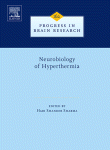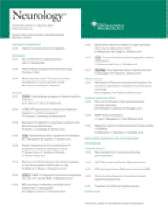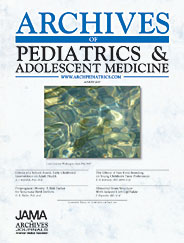|
Progress in
Brain Research

Prog Brain Res. 2005;150:369-79.
The concept and
practice of brain death
Bernat
JL.
Neurology Section, Dartmouth Medical School, Hanover, NH
03755, USA. bernat@dartmouth.edu
Brain
death, the colloquial term for the determination of human
death by showing the irreversible cessation of the clinical
functions of the brain, has been practiced since the 1960s
and is growing in acceptance throughout the world. Of the
three concepts of brain death--the whole-brain formulation,
the brain stem formulation,
and the higher brain
formulation--the whole-brain formulation is accepted and
practiced most widely. There is a rigorous conceptual basis
for regarding whole-brain death as human death based on the biophilosophical concept of the loss of the organism as a
whole. The diagnosis of brain death is primarily a clinical
determination but laboratory tests showing the cessation of
intracranial blood flow can be used to confirm the clinical
diagnosis in cases in which the clinical tests cannot be
fully performed or correctly interpreted. Because of
evidence that some physicians fail to perform or record
brain death tests properly, it is desirable to require a
confirmatory test when inadequately experienced physicians
conduct brain death determinations. The world's principal
religions accept brain death with a few exceptions. Several
scholars continue to reject brain death on conceptual
grounds and urge that human death determination be based on
the irreversible cessation of circulation. But despite the
force of their arguments they have neither persuaded any
jurisdictions to abandon brain death statutes nor convinced
medical groups to change clinical practice guidelines. Other
scholars who, on more pragmatic grounds, have called for the
abandonment of brain death as an anachronism or an
unnecessary prerequisite for multi-organ procurement,
similarly have not convinced public policy makers to
withdraw the dead-donor rule. Despite a few residual areas
of controversy, brain death is a durable concept that has
been accepted well and has formed the basis of successful
public policy in diverse societies throughout the world.
__________________________________________________________

Crit Care Med. 2004 Jun;32(6):1284-8
Variability
among hospital policies for determining brain death in
adults
Powner DJ,
Hernandez M,
Rives TE.
Department of Neurosurgery,
University of Texas Health Science Center at Houston, USA.
OBJECTIVE:
In the absence of federal requirements or state statutes,
criteria to certify brain death are specified by medical
staff and administrative policies in individual hospitals.
Variability among such policies may allow inconsistency in
the declaration of death by neurologic criteria. Our intent
was to partially quantify diversity among hospital standards
used in brain death certification. DESIGN: Survey. SETTING:
Six hundred randomly selected hospitals.
PATIENTS: None.
INTERVENTIONS:
A survey was conducted of 600 hospitals randomly selected
from the American Hospital Association registry representing
200 hospitals each of <300 beds, 300-500 beds, and >500
beds. One hundred six policies submitted by these
institutions comprised the final study group. Policies were
reviewed for criteria of interest and were compared against
variables recommended by the American Academy of Neurology.
MEASUREMENTS AND MAIN
RESULTS: Significant
variability in policy criteria was found compared with the
American Academy of Neurology and other authoritative
standards.
Differences were greatest in specifying conditions to be
excluded before testing and in specific testing methods
during a detailed physical examination
The few differences noted between larger vs. smaller
hospitals most likely reflect greater availability of
resources in larger institutions.
CONCLUSIONS:
Differences among hospital policies for certification of
brain death may permit variability among hospitals
throughout the United States in the pronouncement of death
by neurologic criteria.
Standardization and enforcement of policies that ensure the
highest possible accuracy should be considered.
__________________________________________________________

Can J Anaesth. 2006 Jun;53(6):602-8.
Brief review: history, concept and
controversies in the neurological determination of death
Baron L,
Shemie SD,
Teitelbaum J,
Doig CJ.
Department of Anesthesia,
Misericordia Community Hospital, 16940 - 87 Avenue,
Edmonton, Alberta T5R 4H5, Canada. lenbaron@shaw.ca
PURPOSE:
Despite general worldwide acceptance of the concept of
neurological
determination of death (NDD),
inconsistencies in clinical criteria and ancillary testing
requirements remain. Numerous guidelines for NDD may be
applied in clinical practice by a variety of medical
practitioners, but the scientific rationale for specific
guideline recommendations often remains unclear. This review
examines the evolution of NDD, and seeks to provide
scientific validation for existing NDD criteria.
SOURCE:
English language peer-reviewed medical journals and
established contemporary medical texts. PRINCIPAL
FINDINGS:
Currently published guidelines appear to have evolved from
the work of the ad hoc Committee of the Harvard Medical
School to Examine the Definition of Brain Death. The
Conference of the Royal Colleges and Faculties of the United
Kingdom refined the criteria and subsequently adopted the
principal of brainstem death. While the fundamentals of NDD
guidelines are remarkably consistent worldwide, specific
criteria and requirements are often inconsistent.
CONCLUSION:
Numerous controversies regarding NDD continue to exist,
necessitating further scientific clarification of these
issues. More recently published guidelines representing the
collective opinion of world experts in NDD based upon best
current scientific evidence are available in current medical
journals.
__________________________________________________________
Journal of
the American Academy of Neurology

Neurology. 2002 Jan 8;58(1):20-5.
Brain death worldwide: accepted fact but no global consensus in
diagnostic criteria.
Wijdicks EF.
Department of Neurology,
Neurological and Neurosurgical Intensive Care Unit, Mayo
Medical Center, Rochester, MN, USA. wijde@mayo.edu
OBJECTIVE:
To survey brain death criteria throughout the world.
BACKGROUND: The clinical diagnosis of brain death allows
organ donation or withdrawal of support. Declaration of
brain death follows a certain set of examinations. The code
of practice throughout the world has not been systematically
investigated.
METHODS:
Brain death guidelines in adults
in 80 countries were obtained through review of literature
and legal standards and personal contacts with physicians.
RESULTS:
Legal standards on organ transplantation were present in 55
of 80 countries (69%). Practice guidelines for brain death
for adults were present in 70 of 80 countries (88%). More
than one physician was required to declare brain death in
half of the practice guidelines. Countries with guidelines
all specifically specified exclusion of confounders,
irreversible coma, absent motor response, and absent
brainstem reflexes. Apnea testing, using a PCO(2) target,
was recommended in 59% of the surveyed countries.
Differences were also found in time of observation and
required expertise of examining physicians. Additional
provisions existed when brain death was due to anoxia.
Confirmatory laboratory testing was mandatory in 28 of 70
practice guidelines (40%).
CONCLUSION:
There is uniform agreement on the neurologic examination
with exception of the apnea test. However, this survey found
other major differences in the procedures for diagnosing
brain death in adults.
Standardization should be considered.
__________________________________________________________

Crit Care Med. 1993 Dec;21(12):1951-65.
Brain death in the pediatric patient: historical,
sociological, medical, religious, cultural, legal, and
ethical considerations.
Farrell MM,
Levin DL.
Children's Medical Center of
Dallas, Parkland Memorial Hospital, TX.
OBJECTIVE:
To detail the origins of the definition of death, the
development of the criterion of whole brain death as
fulfilling the definition of death, and the tests used to
fulfill that criterion.
DATA SOURCES:
A review of the literature was
performed. No Institutional Review Board approval was
necessary. DATA EXTRACTION:
In 1959, patients were described as being in "coma
dépassé" or beyond coma. In 1967, the first successful heart
transplantation took place, with the organ coming from a
brain-dead, beating-heart donor. However, anxiety over the
definitions of death did not begin with the modern,
technological era, and death itself has never been definable
in objective terms. It has always been a subjective and
value-based construct. During ancient times, most people
agreed that death occurred when a person's heartbeat and
breathing stopped. For the Greeks, the heart was the center
of life; for the ancient Hebrews and Christians, the breath
was the center of life. In the 12th century, Maimonides
pointed toward the head, and the loss thereof, as the reason
for lack of central guidance of the soul. Physicians neither
diagnosed nor certified death. During the Enlightenment, the
necessity of heartbeat, breath, and consciousness for the
definition of life was questioned, leading to questioning
regarding the definition of death. Tests to fulfill the
criteria of death, and tests to determine the absence of
integration between functions of respiration, circulation,
and neurology were introduced. Sensorimotor potential was
becoming recognized as defining life, rather than heartbeat
and respiration. As new tests were devised to fulfill
criteria of death, the physician developed a professional
monopoly on meeting the criteria of brain death. In the
modern era, the boundary between life and death has been
blurred, but the intensive care unit straddles this
boundary. We may have situations where the patient is alive
but in a coma, without functioning heart, lungs, kidneys, or
gastrointestinal tract, with a transplanted liver, a
reversed coagulation system, a blocked immune system, and a
paralyzed musculoskeletal system.
DATA SYNTHESIS:
A human being is a man, woman, or child who is a composite
of two intricately related but conceptually distinguishable
components: the biological entity and the person. Therefore,
human beings can suffer more than one death: a biological
death and decay, and another death. Biological death is a
cessation of processes of biological synthesis and
replication, and is an irreversible loss of integration of
the biological units. The reasons for having criteria for
death are to diagnose death and pronounce a person dead.
Society can then begin to engage in grief, religious rites,
funerals, and burials, and accept biological death. Wills
can be read, property distributed, insurance claimed,
individuals can remarry, succession can take place, and
legal proceedings can begin. Also, organ donation can take
place, which entails difficult ethical decisions. The
Harvard criteria of 1968 were devised to set forth
brain-death criteria with whole brain death in mind.
Currently, there are several controversies regarding these
criteria: a) whether they apply to infants and children; b)
whether ancillary tests are necessary; c) what the intervals
of observation and testing are; and d) are there exceptions
to the whole brain death criteria. Concerning the use of the
adult criteria for infants and children, most researchers
now agree that the adult criteria apply to infants and
children who are full term and > 7 days of age. Concerning
ancillary tests, there has been, in our machine- and
technology-oriented profession, a great deal of emphasis on
the different tests and their ability to fulfill the
criteria of whole brain death. However, clinical examination
and the apnea test are usually sufficient to fulfill the
criteria. Ancillary tests may be desired in some cases, and
a variety of these tests is available. (ABSTRACT TR
__________________________________________________________

Can J Anaesth. 2003 Aug-Sep;50(7):725-31.
Brain death: resolving inconsistencies in the ethical declaration of
death.
Doig CJ,
Burgess E.
Department of Critical Care
Medicine, University of Calgary, Calgary, Alberta, Canada.
cdoig@ucalgary.edu
PURPOSE:
The first criteria for the determination of brain death were
developed in 1968 in part to address concerns that had
arisen with the retrieval of organs for transplantation.
Despite over 30 years of application, some professional and
public doubt persists over the validity of the theoretical
construct underlying this method of determining death. Our
review will address historical perspectives on the
development of brain death criteria, and inconsistencies in
current clinical criteria.
METHOD:
Narrative review from selected MEDLINE references and other
published sources.
PRINCIPLE FINDINGS:
The primary construct of the determination of death is that
either cardiopulmonary or neurological function irreversibly
ceases. However,
there is inconsistency in the neurological criteria for
death between jurisdictions, between patient populations,
and in the use of confirmatory tests. These inconsistencies
may cause concern in the public or profession about the
validity of the determination of death by neurological
criteria.
CONCLUSIONS:
Organ transplantation is premised on professional and public
acceptance that the donor is dead. Given that
the criteria for brain death or their application remain
variable, we suggest that it is reasonable to
consider a national consensus to address these
inconsistencies. Alternatively, the standard use of
confirmatory radiographic testing prior to the retrieval of
organs from donors who meet clinical brain death criteria
should be considered to provide conclusive evidence of
permanent and irreversible loss of brain function.
__________________________________________________________

Arch Pediatr Adolesc Med.
2006 Jul;160(7):747-52.
Brain death: understanding of the conceptual basis by pediatric
intensivists in Canada
Joffe AR,
Anton N.
Division of Pediatric Intensive Care, Department of
Pediatrics, University of Alberta, Edmonton, Canada. ajoffe@cha.ab.ca
OBJECTIVE:
To determine whether pediatric intensivists in Canada are
aware of the controversies regarding the concept of brain
death (BD). DESIGN: Prospective survey.
SETTING:
From February to April 2004, a survey was mailed to each
intensivist in the 15 pediatric intensive care units across
the 8 provinces of Canada.
PARTICIPANTS:
Sixty-four practicing pediatric intensivists.
MAIN OUTCOME MEASURES:
Response rate, conceptual reasons to explain why BD is
equivalent to death, and clinical findings that exclude a
diagnosis of BD. RESULTS: Of the 64 surveys, 54 (84%) were
returned. When asked to choose a conceptual reason to
explain why BD is equivalent to death, 26 (48%) chose a
higher brain concept, 17 (31%) chose a prognosis concept,
and only 19 (35%) chose a loss of integration of the
organism concept. More than half the respondents answered
that BD is not compatible with electroencephalographic
activity, brainstem evoked potential activity, or some
cerebral blood flow. More than a third of respondents
answered that a brainstem with minimal microscopic damage
was not compatible with BD. Of the 36 respondents who
answered they were comfortable diagnosing BD because "the
conceptual basis of brain death makes it equivalent to death
of the patient," in their own words, only 8 (22%) used a
loss of integration of organism concept, 9 (25%) used a
prognosis concept, 7 (19%) used a higher brain concept, and
13 (36%) did not articulate a concept.
CONCLUSIONS:
There is significant confusion about the concept of BD among
pediatric intensives in Canada. The medical community
should reconsider whether BD is equivalent to death.
__________________________________________________________

Can J Anaesth. 2006 Jun;53(6):613-9.
Variability in hospital-based brain death guidelines in Canada.
Hornby K,
Shemie SD,
Teitelbaum J,
Doig C.
Division of Pediatric Critical
Care, Montreal Children's Hospital, McGill University Health
Centre, 2300 Tupper Street, Montreal, Quebec H3H 1P3,
Canada.
PURPOSE:
Variability has been
reported in the practices to determine death by neurological
criteria for adults and children. The objective
of this study was to determine if this variability exists in
the Canadian context.
METHODS:
A cross-sectional survey of the Canadian intensive care
units (ICUs) involved in the care of potential organ donors,
and Canadian organ procurement organizations (OPOs) was
undertaken. We contacted the medical directors of these
units and asked them to provide their guidelines for the
neurological determination of death (NDD). A framework,
which identifies key diagnostic criteria for NDD, was used
to assess the content of all study documents.
RESULTS:
With a response rate of 68%, we
found that key diagnostic criteria for NDD were incorporated
inconsistently in the guidelines from Canadian ICUs and OPOs.
Areas of concern include omissions in: the testing of
brainstem reflexes; components of the apnea test;
indications for the use of supplementary testing; wait
intervals prior to performing the first NDD examination; the
definition of NDD; and potential confounding factors. In
addition, inconsistencies were found pertaining to wait
intervals required between examinations and the legal timing
of death.
CONCLUSION:
These findings
reinforce the need to standardize the practice of the
neurological determination of death in Canadian centres,
which has the potential to reduce practice variation.
Clear medical standards for NDD augment the quality, rigour
and credibility of this determination.

__________________________________________________________
|